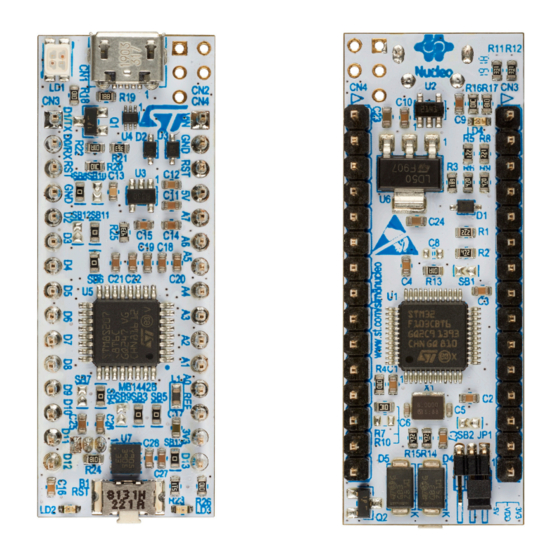
Table of Contents
Advertisement
Quick Links
UM2391
User manual
STM8 Nucleo-32 board (MB1442)
Introduction
The
NUCLEO-8S207K8
STM8 Nucleo-32 board featuring the STM8S207K8T6C STM8 8-bit MCU provides an affordable and
flexible way for users to try out new concepts and build prototypes with STM8S Series microcontrollers in LQFP32 package,
®
choosing from the various combinations of performance, power consumption, and features. The ARDUINO
Nano connectivity
support makes it easy to expand the functionality of the Nucleo-32 open development platform with a wide choice of specialized
shields. The STM8 Nucleo-32 board does not require any separate probe as it integrates the ST-LINK/V2-1 debugger/
programmer and comes with the STM8 standard peripheral library, together with various packaged software examples.
Figure 1.
NUCLEO-8S207K8 top view
Figure 2.
NUCLEO-8S207K8 bottom view
Pictures are not contractual.
UM2391 - Rev 1 - November 2019
www.st.com
For further information contact your local STMicroelectronics sales office.
Advertisement
Table of Contents

















Need help?
Do you have a question about the NUCLEO-8S207K8 and is the answer not in the manual?
Questions and answers